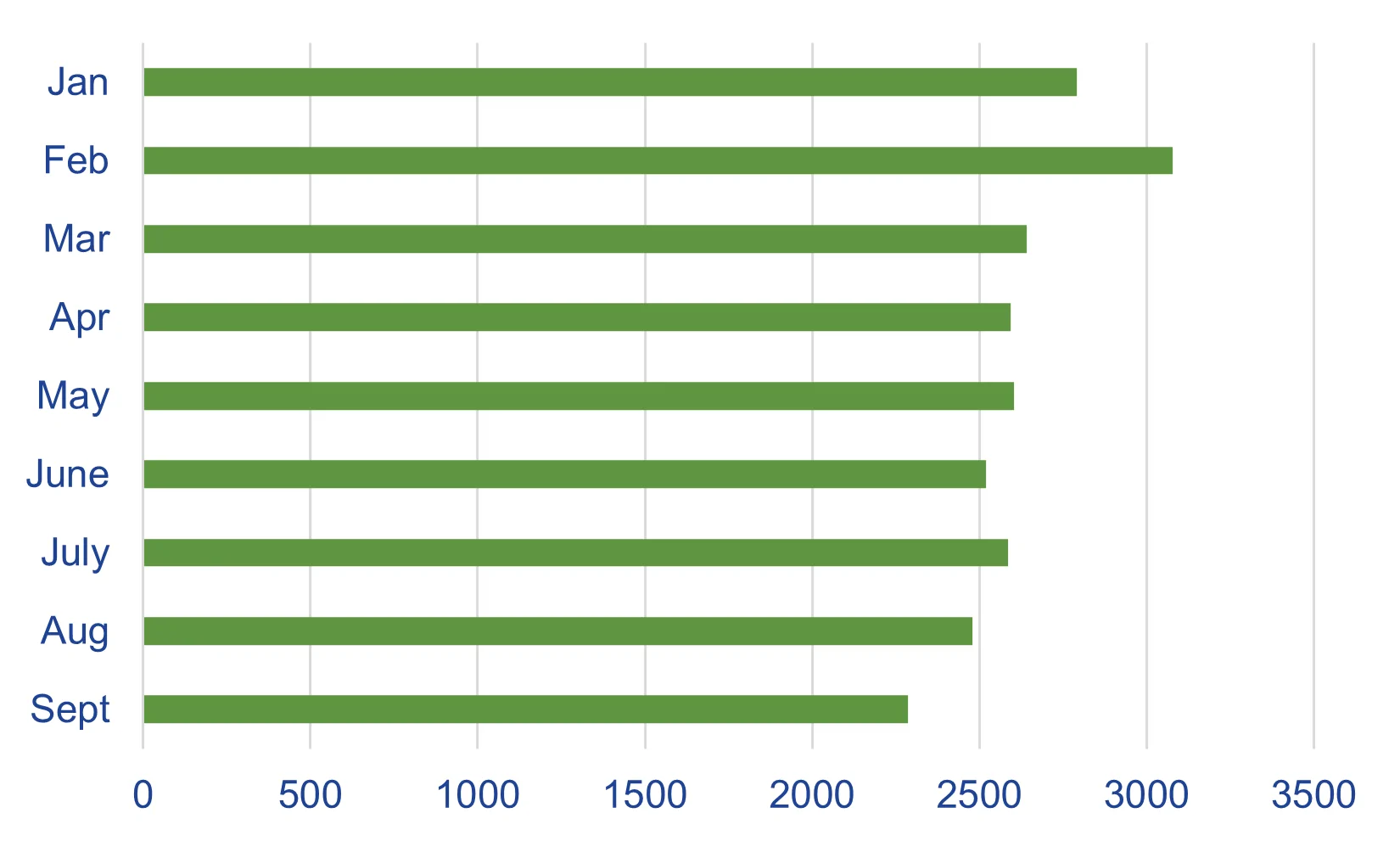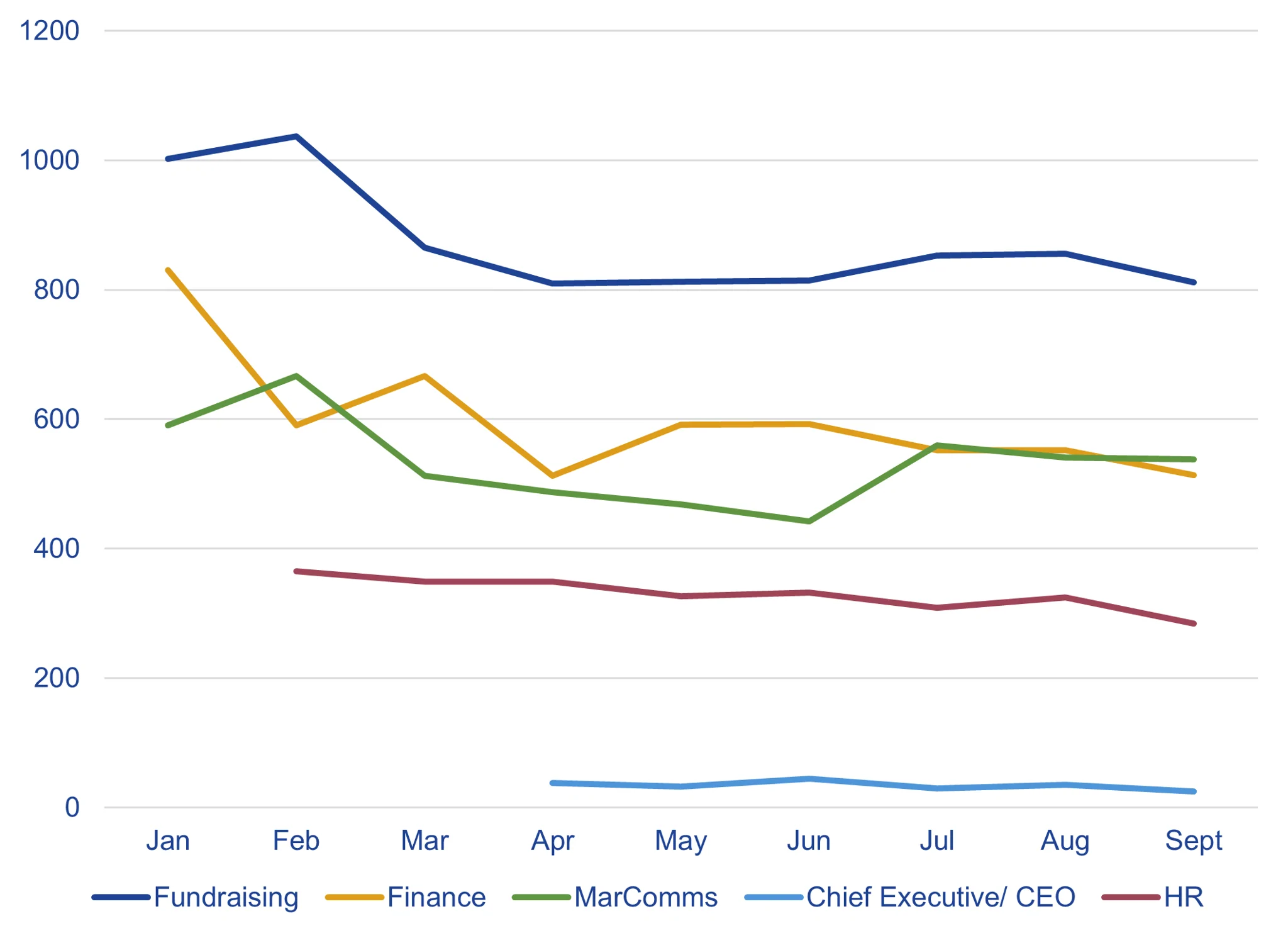Quick CV Dropoff
Want to hear about the latest non-profit and public sector opportunities as soon as they become available? Upload your CV below and a member of our team will be in touch.
Our latest report below analyses data from the non-profit sector for:
For more information or if you have any questions about this report contact marketing@tpp.co.uk


The ONS reported a 4.7% drop in vacancies from June to August 2024 across all sectors, compared to the period before. This is the 26th consecutive period of a reduction in vacancy levels overall.
TPP's analysis of non-profit vacancy data mirrors this with a 5% reduction of live job vacancies overall across the sector during July-September 2024 compared to April-June 2024.
ONS data shows vacancies are also down by 14.3% from the same period last year across all sectors, showing a concerning downward trend. However, vacancies were actually still up by 7.7% compared to pre-pandemic figures.
A possible reason for this downward trend in vacancy levels is likely to be due to economic uncertainty. With the budget due from the government at the end of October, organisations may be waiting to see how they will be impacted before they make crucial hiring decisions.
This can be a good opportunity for organisations to focus on strategic planning, understanding the potential impact on recruitment.

Live vacancy data shows that CEO, HR and finance functions in the non-profit sector have declined during July-September 2024, compared to the previous quarter.
After fundraising vacancies saw a significant decline in Q2, they have increased by 3% during July-September 2024.
Marcomms job levels have remained consistent with Q2.
Data tracked here is for live vacancies within the non-profit sector advertised as permanent, temporary and fixed-term contract.
7% of temporary roles may not be a true reflection of actual live vacancies, as not all temporary vacancies across the sector are advertised. Many are filled without advertising, suggesting that volumes of temporary jobs may be higher.
The distribution of job types have stayed consistent for some time now indicating that the demand for specific skills across the non-profit sector hasn’t changed significantly. This may also indicate that core activities have remained the same, requiring similar levels of staffing over time.
However, even if job levels are stable, there may be opportunities to improve efficiency. By conducting a review of existing role tasks and responsibilities, organisations can determine where potential gaps are and decide whether internal training & development is required or if external hiring could be utilised.
The data from January to September 2024 continues to show a clear preference in the non-profit sector for hybrid work arrangements.
The last three months saw a small, but noticeable decrease in the proportion of remote roles compared to the first half of the year, indicating a continued decline for fully remote roles.
Our recently published Non-Profit Salary, Rewards & Retention Survey results, showed that 10% of respondents work fully remote. Of those that work Hybrid, 11% of respondents have had an increase to the number of days working in the office. The average number of days in the office per month is 8.
The number of live vacancies advertised as full-time and part-time has remained consistent during 2024, regardless of market conditions.

On average, 11% of the live jobs advertised on sector specific job boards between July and September 2024 are entry level roles. This has remained consistent during 2024.
Our latest Non-Profit Salary, Rewards & Retention Survey Report showed that 54% do not feel that recruiting entry-level talent is a priority and this is reflected in the number of live vacancies available.
Our data tells us that organisations are reporting having hard to fill vacancies. This continued lack of entry-level talent will serve to exacerbate this issue, creating further long-term challenges. It is therefore essential to consider the benefits of entry-level staff, such as; innovation, fresh perspectives, an opportunity to enhance diversity, and cost effectiveness. Equally, it is vital to consider whether tailored training programmes can be offered to meet unmet need.
Both permanent and fixed-term contract candidate availability increased over the last quarter (perm by 12% and FTC by 6%) whilst temporary availability has continued to decrease since the start of the year by an additional 6% in Q3.
Job responses are up during July- September 2024, compared with the same period during 2023.

Download our latest Non-Profit Salary, Rewards and Retention Survey.
Our survey report for non-profit organisations and job-seekers, covers: